My Next Vacation
Eastern Pennsylvania contains some of the largest coal beds on the planet. When the Europeans inhabited the state, they discovered the immense amount of the black fuel. Most of the supply is Anthracite, which rendered it useless for centuries. Anthracite is an extremely hard type of coal; it is 95% carbon. Consequently, no one could figure out how to ignite it. Finally, in 1828, a man from Scotland named James Neilson invented the hot blast procedure. Introducing flame while injecting heated air into an iron furnace using a bellows will cause Anthracite to burn. By the end of the nineteenth century, America produced nearly as much coal as the rest of the world combined. Most came from the Eastern Pennsylvania Anthracite belt. This new boom and the discovery of oil in various areas of the state combined to make Pennsylvania the center of big, fuel-intensive industries such as steelmaking and chemicals. Many mining towns sprung up and prospered.
Though it may be hard to ignite Anthracite, it is even harder to extinguish it.
In 1855, the Locust Mountain Coal and Iron Company surveyed and purchased land in what is now Columbia County, 120 miles Northwest of Philadelphia. Thus began the saga of Centralia. This hard-working, homely mining community reached a maximum of 2,761 residents midway through the twentieth century. At one point, it had 19 general stores, 2 jewelry stores, 26 saloons, 2 theaters, a dairy, an ice cream parlor, 5 hotels, 7 churches, a bottling factory, and 6 major colleries. For a time, Centralia symbolized small, hard-working, anonymous Americana. In 2005, the city has only 12 occupants. The forces that build a town also have the power to destroy it.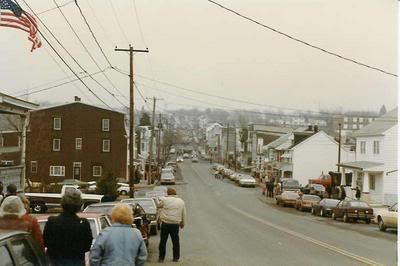
Centralia sat on 24 million tons of Anthracite. Many families made their living by mining it, but by the mid 1950s workers abandoned most of these mines. Then, in May of 1962, sanitation workers began burning trash at a site over an abandoned mine entrance on the outskirts of town; this ignited a coal seam. The fire department poured thousands of gallons on the blaze, but never extinguished it. In all, 8 attempts were made to control the fire, but none worked. Slowly, the inferno worked its way along subterranean seams underneath Centralia. Smoke began to rise from the ground in various places. Route 61, the main road into town, dropped 8 feet and began emitting steam through the cracked pavement. The surface grew warm to the touch, earning it the nickname "The Highway to Hell". Residents could harvest tomatoes from their gardens at Christmas, and many no longer needed to shovel snow. Centralians found this all a novelty, but slowly things began to get worse. In 1979, the tanks at Coddington's Esso gas station, near St Ignatius Church, started heating up. The sensors in the tank registered a temperature of 172 degrees Fahrenheit. 13 feet below the tank, they captured a reading near 1000 degrees Fahrenheit. Basement floors and walls became hot to the touch. Residents began passing out in their houses from the dangerous Carbon Monoxide levels. It all culminated in 1981. As 12-year-old Todd Domanski played innocently in his grandmother's backyard, a hole opened around him and he disappeared into the white smoke. The boy clung desperately to some tree roots until his cousin pulled him out. The hole was found to be 80 feet deep.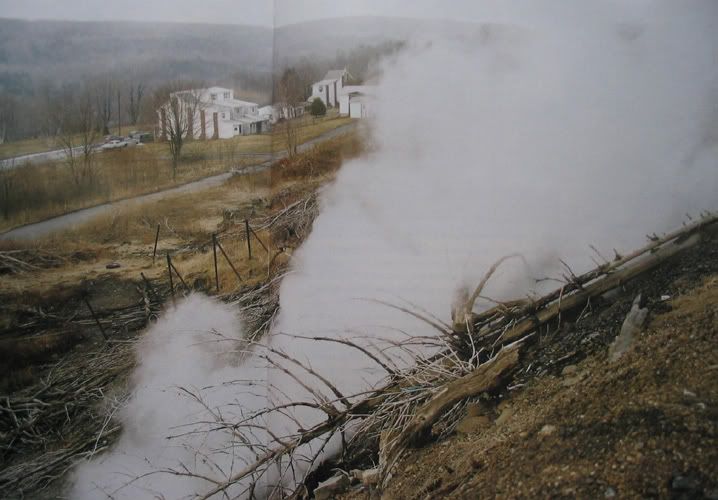


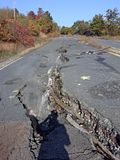
That was the beginning of the end for the town. The federal government came up with 45 million dollars to relocate citizens. As people moved, the government demolished their houses and neatly cleared the rubble. Over 600 buildings were removed. In 1992, the state condemned the remaining buildings and took title to Centralia. The remaining residents became squatters. In 2002, the US Postal Service revoked their postal code: 17927. It is a unique type of ghost town, resembling something out of a surreal science fiction film. It is a large open space with a grid of empty streets furnished with street signs and fire hydrants. Every thirty feet or so, a driveway splits off to nowhere. A couple of buildings, abandoned and inhabited, still exist here and there. Warning signs now deter visitors from visiting the area.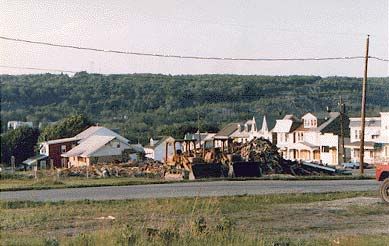
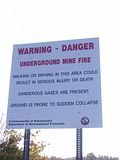
Yet, Centralia continues to hold municipal elections; 8 out of the 12 residents hold office. The state offers a $4,000 maintenance budget. Near an empty intersection sits the volunteer fire engine, ready to go. Ironically, Centralia rarely has any fires above ground. Wildlife fills the void where houses used to be. No one pays property taxes since their property has been condemned, and parking never seems to be a problem. City Councilman John Comarnisky considers purchasing bison and billing Centralia as the "Yellowstone of the East". Residents also believe that opening a time capsule in 2016 (placed in 1966) will generate attention to the town. Many adventurers find the town on the internet and conduct their own investigations. To hear some people talk, you might think the town is coming back.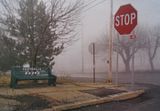
Estimates differ greatly on the subject of how long the fire will burn. Experts give guesses between 100 and 1000 years. Centralia is not alone, however. At least 38 coal fires burn underground in Pennsylvania today. Most have not had such a devastating effect on a town, however. On the bright side, the Centralia fire has not claimed any lives.
I am glad I do not live above Anthracite.
Sources: Smithsonian Magazine, May 2005 Issue
A Walk in the Woods by Bill Bryson
Pictures: personal.psu.edu/users/bsbso112/centralia_pictures
centraliapa.com
offroaders.com
Smithsonian Magazine
Go [HERE] for more information.
